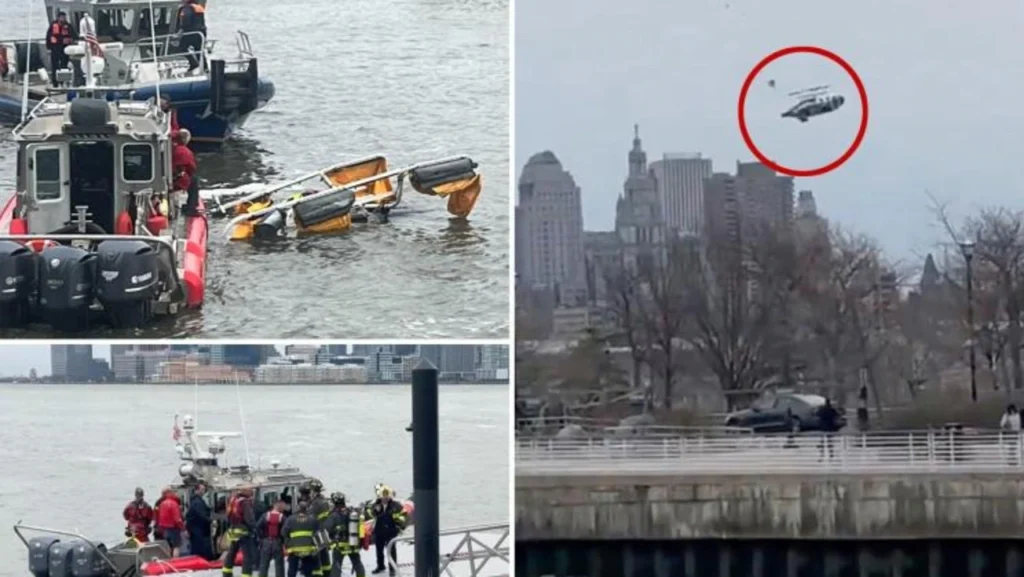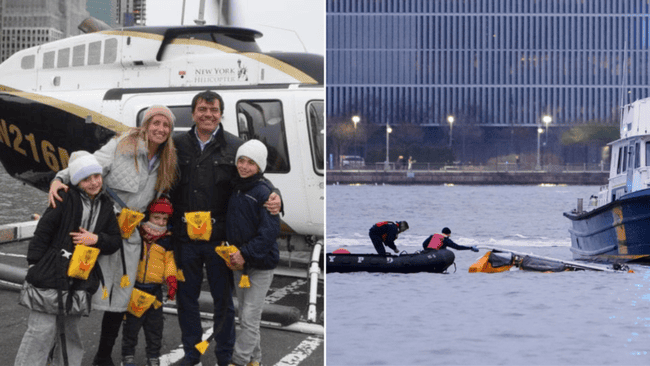In a shocking and heartbreaking event that rocked New York City, a helicopter crash in the Hudson River claimed six lives on April 10, 2025. What was expected to be a scenic flight over Manhattan quickly turned into a devastating tragedy, leaving behind sorrow, questions, and a renewed focus on aviation safety in urban airspace.
The Day It Happened

It was a calm Thursday afternoon when a Bell 206 helicopter, operated by New York Helicopters, lifted off from the Downtown Manhattan Heliport around 2:59 p.m. Onboard were six individuals: a family of five visiting from Spain and their pilot. Within just under 20 minutes into the flight, something went horribly wrong.
Eyewitnesses along the Hudson River shoreline described seeing the chopper flying erratically—its movement jerky and unstable. Then came the noise—loud, mechanical cracking sounds that turned heads and sent chills down spines. In an instant, the helicopter broke apart mid-air, shedding key components like rotor blades before spiraling helplessly into the river near Pier 40.
Who Were the Victims?
Among the passengers were Agustín Escobar, the president of Siemens Spain, his wife, and their three children. They had been in New York for a family vacation. The pilot, a 36-year-old with years of flying experience, also perished in the crash. Emergency crews responded quickly, pulling all six from the river. Four were pronounced dead at the scene, and the remaining two succumbed to injuries at the hospital shortly after.
The incident was a gut-wrenching reminder of how quickly moments can change—and how fragile life truly is.
Video Footage and Public Reaction
Shortly after the crash, video clips recorded by bystanders began to circulate online. The footage was disturbing—showing the helicopter faltering mid-air, twisting unnaturally before plunging into the cold water below. It didn’t take long for the clips to go viral, sparking an outpouring of condolences from around the world and a flood of concern from city residents.
Many viewers expressed outrage and worry, calling into question how safe sightseeing helicopters really are, especially in busy, densely populated environments like New York City.
Investigation Underway
The National Transportation Safety Board (NTSB) and Federal Aviation Administration (FAA) immediately launched a joint investigation. Preliminary findings suggest that both the main rotor and tail rotor separated in-flight—pointing to a possible catastrophic mechanical failure. However, the exact cause remains under review, and officials are expected to release a full report after deeper analysis of the wreckage and flight data.
Meanwhile, aviation experts are already voicing calls for stricter regulations, improved maintenance checks, and tighter oversight for tour operators flying over urban areas.
Public Safety and Policy Concerns
This crash has reignited a long-standing debate around helicopter tourism and private flights in city airspace. Critics argue that these flights pose unnecessary risks—not only to passengers but to people on the ground.
Following the crash, city officials and lawmakers are reportedly reviewing current regulations and evaluating whether changes are needed to prevent another tragedy. There is growing support for stronger restrictions, particularly in densely packed urban zones like Manhattan.
Remembering the Lives Lost
As the city mourns, makeshift memorials have popped up near the Hudson River—bouquets of flowers, handwritten notes, and candles lining the waterfront. Those who knew the Escobar family describe them as kind, driven, and full of life. For many, this incident feels personal, even if they didn’t know the victims directly. It’s a painful reminder of how fragile travel—especially air travel—can be.
Final Thoughts
The helicopter crash over the Hudson River isn’t just a news story—it’s a tragedy that has left a deep mark on a city known for its resilience. As the investigation continues and families grieve, one thing remains certain: New York won’t forget the lives lost that day, and neither will the world watching.
In time, answers will come. But until then, the city looks toward the river, not with awe or admiration—but with reflection, mourning, and a quiet hope that safety will be taken more seriously in the skies above.
